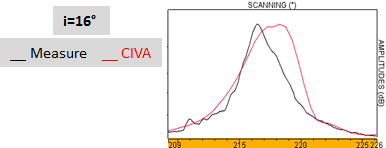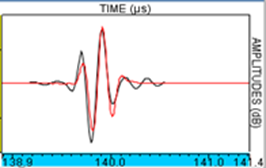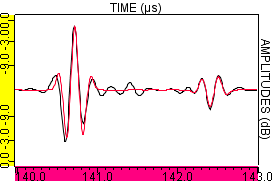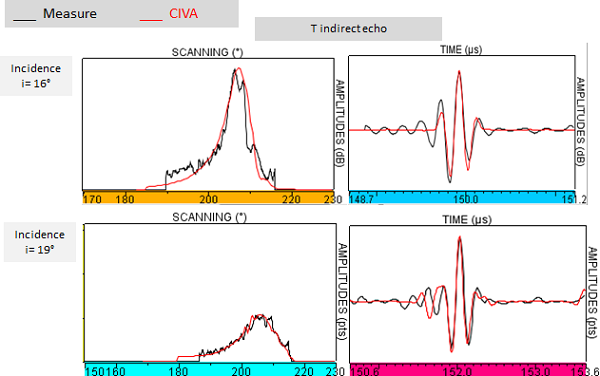Multiskip cylindrical: Side Drilled Holes: interpretation of the comparison results
Summary
Direct echo
The head wave generated at the surface of the cylinder during the inspections performed with an angle of incidence near 16° (and therefore close to the critical incidence for L waves L (14.5 °)) produces an error in the prediction of the T direct refracted beam in the specimen. Indeed, CIVA does not take into account the head waves. This explains the differences observed between the experimental and CIVA simulated echodynamic curve of the T direct echo of the SDH in the cylinder when the incidence angle is 16°.


On the contrary, experimental and simulated echodynamic curves (obtained with an incidence of 19°) of the direct echo of the SDH in the planar and cylindrical parts (T45° in the specimen) are very close. Indeed, for these incidence angles there are no head waves generated on the surface.
.

The experimental and simulated Ascans of the direct echoes of the SDH inspected with an incidence angle of 19° are also in good agreement.

Indirect echo
Experimental and simulated echodynamic curves of indirect echoes of the SDH inspected with angle of incidence of 16° and 19° are in good agreement, so for the Ascans. However, the agreement is better at 19° because there are no creeping waves on the surface and on the backwall of the cylinder.

Finaly :
- At the incidence angle of 16°, the echodynamic curve of the T direct echo of the SDH is poorly predicted by CIVA because head waves are not taken into account. It is also possible that head waves are generated during each skip of the T beam on the surface of the cylinder. This would make the error being cumulative for the prediction of multiple echoes of the SDH.
- At the incidence of 19°, the direct and indirect echoes of SDH are well predicted.
Continue to Conclusion
